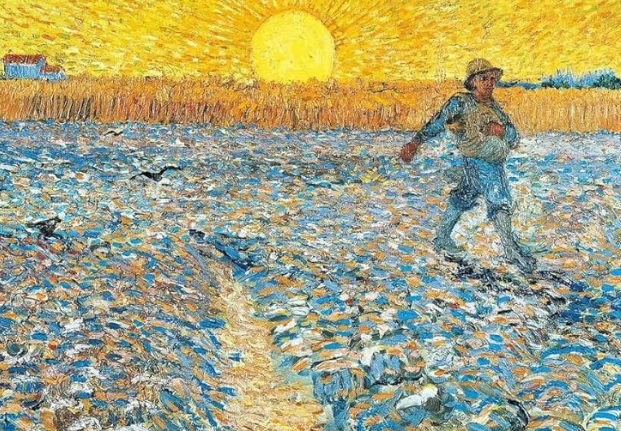Vincent Van Gogh is undoubtedly one of the most celebrated artists in history, known for his vibrant and emotive paintings. One of his most iconic works is “The Sower,” a masterpiece that showcases his unique style and vision.
The Mystery Behind the Masterpiece
“The Sower” was painted by Van Gogh in 1888, during his time in Arles, France. The painting depicts a lone figure sowing seeds in a vast field, with the sun setting in the background. The figure is stooped over, absorbed in his task, with a sense of purpose and determination.
Van Gogh’s use of bold colors and expressive brushwork creates a sense of movement and energy in the painting, capturing the dynamic nature of the agricultural process. The vibrant blues and yellows of the sky and field contrast with the dark greens and browns of the figure, creating a striking visual impact.
Uncovering the Symbolism
The subject of “The Sower” has deep symbolic significance for Van Gogh, reflecting his own struggles and aspirations as an artist. The figure of the sower represents the artist himself, planting creative seeds and nurturing his artistic vision.
The act of sowing seeds also symbolizes the transformative power of art, as Van Gogh believed that through his work, he could sow seeds of beauty and inspiration in the world. The setting sun in the background represents the passage of time and the fleeting nature of life, adding a sense of poignancy to the scene.
Rediscovering Van Gogh’s Legacy
“The Sower” is a powerful example of Van Gogh’s ability to infuse everyday subjects with profound meaning and emotion. Through his bold use of color and energetic brushwork, he created a work that continues to captivate and inspire viewers to this day.
By uncovering the hidden depths of “The Sower,” we gain a deeper appreciation for Van Gogh’s genius and his enduring legacy as a master of modern art. His ability to capture the beauty and complexity of the human experience continues to resonate with audiences around the world, making him a timeless figure in the history of art.


